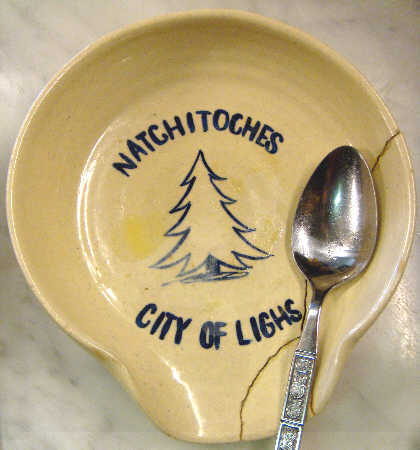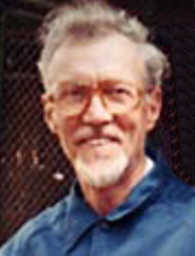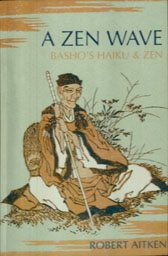From its origin in the play of verses added to successively by multiple authors to its
current form of a single standalone poem consisting of a three line, seventeen syllable poem
of five, seven, and five syllables haiku has retained its form as a play verse in modern
times. A book of haiku should come with a warning label that says something like: "Do Not
Enter Except to Play or You Will be Pecked to Death by Doves."
On page 30 Aitken shares an interesting distinction between English and Japanese
words for fruit and flowers. We are so accustomed to think of having a single word for
fruit, like pear, apple, plum and two words to refer to the flowers, pear blossoms, apple
blossoms, and plum blossoms, that it would never occur to us that in Japanese the situation
would be reversed there are two words for plum and only one word for plum blossom, etc.
This deserves to be meditated on there must a primacy of fruit for Western thought and a
primacy of blossom for Oriental thought. We in the West think of apple blossoms as the
forerunner of the primary function of the apple tree: to produce apples, whereas the in the
Orient, the plum fruit is the forerunner of the plum-blossoms of future trees. Feel this
distinction as it plays out in the next haiku from page 130.
How many, many things
They bring to mind
Cherry blossoms!
Here's what Aitken tells us about the importance of the cherry blossoms to Japanese
life.
[page 131] Instilled in the Japanese mind is the association of the
ephemerality of the cherry blossoms with the brevity of human life.
Blooming for so short a time, and then casting loose in a shower of
lovely petals in the early April wind, cherry blossoms symbolize an
attitude of nonattachment much admired in Japanese culture.
Compare this attitude with the Western attitude of the pretty cherry blossoms
presaging the appearance of the real purpose of the cherry tree: cherries.
Here's another haiku I wrote to play with what I think is the theme of the book as
given in its title, A Zen Wave. My haiku was inspired by the Basho one on page 38 and
Aitken's commentary on waving goodbye as a custom in Japan.
Wave & wave until
they are no longer in sight —
all that's left is Fall.
[page 39] People in the West, sometimes quite insensitive to the
importance of farewells, can learn from the Japanese, who say farewell
to the very end. They wave and wave until their friends are out of sight.
We in the West tend to see a visit of a friend as the fruit and the farewell as a trivial
falling blossom of the fruit tree. In Japan the visit is like the short-lived blossom that falls upon parting and the shower of petals must be enjoyed to the full it is the harbinger of future fruit, future visits. Here is Basho's haiku on
the subject:
For one who says,
"I am tired of children,"
There are no flowers.

The next haiku I wrote was inspired by Basho's one on page 61 and the poem
"THAT" by Joyce Carol Oates on page 62. It has to do with imperfections. I bought a spoon
holder in a general store in the town of Natchitoches [nak ee tush'] that had a misspelling
on it, the 't' in the word 'lights' was missing. The lady who sold it to me also led tours of
the Christmas lighting decorations that the town is famous for along the Cane River. She
didn't want to sell it to me. Wanted me to get an unblemished one. I told her, "This holder
was obviously made by a human being, not a computer, and that's important to me." As
Aitken says on page 63, "Teeth protrude a little, a birthmark, an eye with a cast now
that's a unique individual."
That holder of spoons
Natchitoches City of Lighs
That's where my spoon rests.
"Meanings accrue if you ambigue." is a favorite saying of mine. Sometime one can
be too careful, too perfect. I was surprised to notice how careless spelling of words in a
blackboard presentation can add liveliness to the presentation. Aitken well understands that
aspect of communication, as he illustrates below.
[page 123] It is true that we must be clear, but it may be the wandering
thought that is a creative idea. Wu-men warns: "To be alert and never
ambiguous is to wear chains and an iron yoke." the Ts'ai Ken T'an
(Vegetable Roots Discourses) tells us: "Water which is too pure has no
fish."
In an age in which purified water from stores has replaced the drinking of water
from the tap, I take pride in drinking water from my tap that comes from the great
Mississippi River that drains the middle two-thirds of this great country. In taste tests it has
beaten the pure waters from highly touted mountain streams. If I might build on the quote
from the Discourses above, "Water which is too pure has no taste."
As I close I am watching a gecko feeding himself on my window. Each night that
follows day, he comes out as the light from my reading lamp attracts his food to his vertical
dining table on the outside of my window. You might see me now smiling and waving a
zen wave to you all the way to the end of our long goodbye . . .
Now! Days come, days go
A gecko on the window;
A smile is soul food.

~ See also Blowing Zen by Ray Brooks ~







